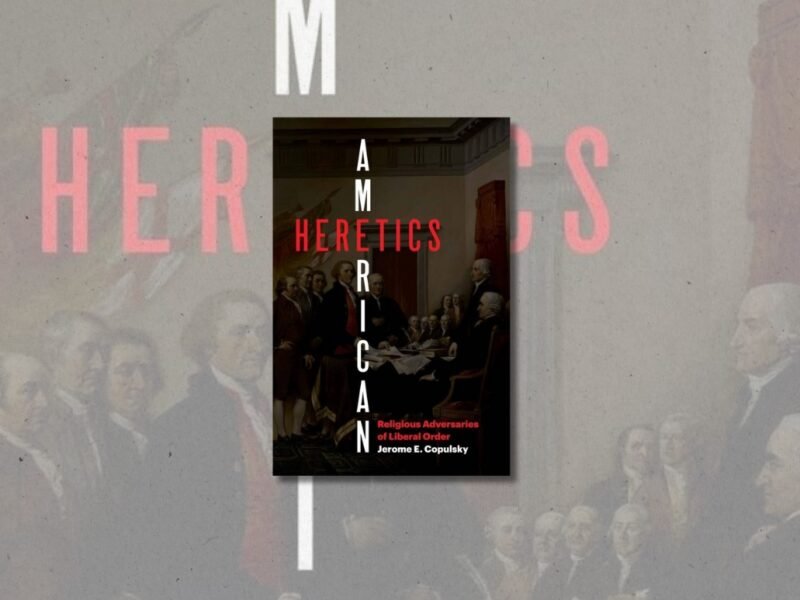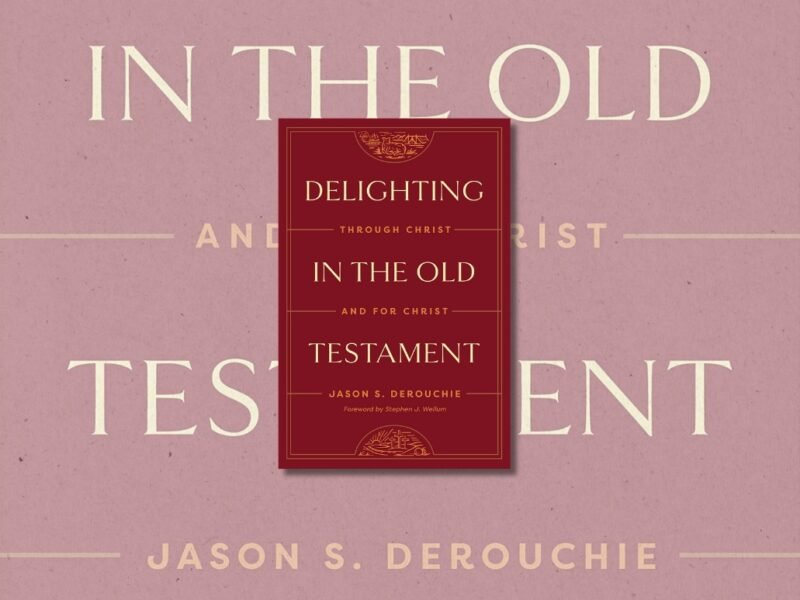Reformation Anglicanism: Essays on Edwardian Evangelicalism. Edited by Mark Earngey and Stephen Tong. London, UK: The Latimer Trust, 2023. 260 pp. $11.50 (paper).
In some ways, and for some people, the Edwardian period of the English Reformation is fertile ground for speculations about what could have been. Edward VI died in 1553 at the young age of fifteen, succeeded by the Roman Catholic Mary, who undid his reforms and then some. Even once Elizabeth I acceded to the throne in 1559, the six-year interim of Roman Catholic persecution had blunted the momentum built up during Edward’s short reign, to say nothing of Elizabeth’s markedly different approach to the Church of England’s theological constitution. Yet even though Edward’s reign was brief, a number of significant events and contributions to the English Reformation took place within it.
Reformation Anglicanism thus seeks to draw attention to this period and explore it more deeply. It is composed of several essays that were delivered, save one, at the Reformation Anglicanism Symposium at Moore Theological College, Australia in 2019. The first four essays discuss “some foundational documents of the English Reformation” (10) such as the Homilies and the Forty-five Articles of Religion. The latter five focus on “foundational people and places” (12) such as Heinrich Bullinger and Martin Bucer. Some of the essays cover more familiar ground, such as Mark D. Thompson’s discussion of the Homily “A Fruitful Exhortation to the Reading and Knowledge of Holy Scripture.” Others get into relatively obscure topics that shed light on the Edwardian period in interesting ways. Examples include Joe Mock’s chapter on Bullinger’s correspondence with Thomas Cranmer (as well as other key figures of the English Reformation) and N. Scott Amos’s analysis of Bucer’s funeral, subsequent disinterment and burning, and rehabilitation.
If the book were simply an exploration of various facets of the Edwardian period of the English Reformation, it would be a fine collection. Sadly, a number of this volume’s contributors cross the line between scholarly interest in their chosen subjects and transparent wishcasting, a tendency made apparent right from the start:
The English Reformation may have had an idiosyncratic phase under Henry VIII; it may even have had a short but significant Lutheran episode. But it was undoubtedly a Reformed Reformation with a robust relationship with the theologians of Strassburg and Zürich. (9)
Having equated “Reformed” with “continental Calvinist,” much of the rest of the book propagates this angle. Gerald Bray approvingly notes how the proposed canons that came to be known as the Reformatio legum ecclesiasticarum “affirm reprobation, or predestination to eternal damnation” (72). He then concludes on the basis of these canons, which never had any official authority in the Church of England, that the English Reformers were in fact proto-Puritans:
It [the Reformatio] offers proof that many of the themes associated with Puritanism were present in the minds of the Reformers – Archbishop Cranmer would not have recoiled at what his grandchildren would be advocating, but would have supported most of their demands, and indeed was the source for many of them. In this respect, the Reformatio is an invaluable bridge between the early English Reformation and what some have called the Puritan revolution of the seventeenth century, and the activities of men like Archbishop William Laud are revealed as the aberrations that they were. (82)
On the flip side, the actual proto-Puritan John Hooper is painted by Stephen Tong as a “magisterial reformer” rather than a “maverick” (85). Though Hooper refused at first to wear clerical vestments at his episcopal confirmation ceremony on the grounds of what later came to be adopted by Puritans as the regulative principle (any element of worship not expressly commanded in Scripture is forbidden), Tong characterizes this initial resistance as “urging further reform at a faster pace” rather than a desire to “break from his evangelical compatriots” (93). It hardly needs to be said that framing Hooper’s actions this way does nothing to change the underlying reality that his position was at odds with the established Church as it existed at the time, and that his arguments served as a source and inspiration for non-conformists in later years. As for Tong’s comment that Hooper’s embryonic regulative principle argument is “straightforward and biblical at its core” (92), scarce anything could do it justice.
Contributors that largely stick to the history still manage to work in some barbs. In Tim Patrick’s survey of the Forty-five Articles of 1552 (subsequently pared down to the Forty-two articles of 1553), he observes that the Forty-five Articles mention prayer for the dead alongside other practices condemned for their close association with the doctrine of purgatory, whereas the Forty-two Articles (and ultimately the Thirty-nine Articles) omit this reference. Patrick finds this change “very peculiar and most unexpected” (54), at odds with the development of the Prayer Book, in which prayers for the dead were removed from the 1552 edition. However, contra Patrick, there is no necessary connection between prayer for the dead and belief in purgatory.[1]
Even an author whose contribution on the reformed use of cathedrals in Edwardian England is on the whole fascinating and informative seemingly cannot resist. “Cathedrals,” Edward Loane writes, “did become something of a seedbed for the rise in high churchmanship.” Men such as John Overall, Lancelot Andrewes, Richard Neile, and William Laud, who “were all deans before becoming bishops….made changes in the church which repudiated many things the reformers held dear” (138), we are told.
There have undoubtedly been many Anglicans who can rightly be called Calvinists. Some even of the English Reformers could be characterized as such. But to insist that the very formularies of the Church of England are Calvinist in essence is mistaken and tedious. Moreover, appealing to documents that never had any formal authority in the Church as evidence for its Calvinist nature, as many contributors for this volume do, strains credulity. Those yearning for a church that has Calvinism baked into its very foundations should become (or remain) Presbyterian and save everyone a great deal of heartburn. Then again, the Australian Diocese of Sydney—with which most of this volume’s contributors are affiliated—is not known for rigorously adhering to the Anglican tradition, so this book is hardly an unexpected departure.[2]
Let me reiterate that Reformation Anglicanism does contain some interesting material on the Edwardian period of the English Reformation. Readers who can appreciate what there is and don’t mind the overt attempts to Calvinize Anglicanism will find some value in it. The unmistakable and ill-founded tenor of the project keeps it from reaching its full potential, though.
Notes
- For an account of how prayer for the dead can be understood and practiced apart from a belief in purgatory, see Edward Harold Browne’s exposition of Article XXII, https://northamanglican.com/exposition-of-the-thirty-nine-articles-article-xxii-part-1/. ↑
- See, e.g., Charles Erlandson, Orthodox Anglican Identity: The Quest for Unity in a Diverse Religious Tradition (Eugene, OR: Pickwick Publications, 2020), 92‒94, 101, 131‒32. ↑







'Book Review: “Reformation Anglicanism: Essays on Edwardian Evangelicalism”' has 1 comment
May 8, 2023 @ 7:03 pm Sam Fornecker
James, I am grateful you’ve brought this book to my attention. I am slightly confused by the points you are questioning, given:
a) that Gerald is of course aware (being Mr Tudor canon law) of the significances of the Reformatio (in my view, anyone claiming a straightforward answer to the canon law continuity question is claiming too much);
b) the pervasive scholarly understanding that the Edwardians’ legacy was multivalent enough that it could plausibly be claimed by later moderate puritans is undisputed in both revisionist and more traditional historiography; and
c) that many of the other views you list (the Zürich connection, the high-flying association with cathedrals, etc) are not historiographically controversial.
If you go back and read the historical preface to Nicholls’ defense of the church of England (it may have been his BCP commentary) you’ll find him distinguishing the early Henrician period as the golden age of the English reformation. He saw that something else was up with the Edwardians. There is a notable polemical aroma in this review: one may quibble with Sydney on style (I do not feel the need or desire to do so), but the principles they claim to derive from the Edwardians—in my view—really are there.
Thanks again for reviewing the book. All best, brother.
SF.